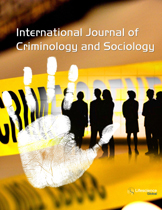ijcs
|
|
Abstract: Instances of wrongful conviction have the nature of universality and latency. The determination of wrongful conviction has the nature of ambiguousness and antagonism. The facts behind a case of wrongful conviction are not always black-and-white; sometimes there is a grey zone, meaning that there is no way to determine with accuracy whether the defendant is guilty or not. As a result, the rectification of wrongful conviction becomes very difficult. In the case of Hugejiletu, for example, although the true perpetrator came out in 2005, the wrongful conviction had not been correctedby the court until the end of 2014. Therefore, the standard of proof for redressing wrongful convictions needs to be clarified. Through case analyses of the standard in USA, UK and Germany, we can see that the standard for redressing wrongful convictions are different from the standard for convictions, with the former being generally lower than the latter. We should restate the standard of proof for redressing wrongful convictions in Chinese criminal proceedings, and make distinctions between the standard for starting a retrial, the standard for redressing a wrongful conviction, and the standard for awarding a state compensation. Keywords: Chinese criminal proceeding, wrongful conviction, standard of proof, retrial, redressing.Download Full Article |
|
|
Abstract: Bloodstain Pattern analysis particularly deals with the reconstruction of dynamic bloodletting events from static bloodstain patterns. Bloodstain patterns often help to sequence events that might have occurred at a crime scene. It can also be used to draw inference about the position of the victim/s, perpetrator/s and bystander/s (if any) at the crime scene. This paper is aimed at intricate analysis/interpretation of transfer stains produced by blunt ended objects at a crime scene. By way of experiments performed within a laboratory setting this paper attempts at establishing that hammer transfer stain or possible weapon transfer stain at a crime scene does not indicate that that particular instrument has been used to murder the victim/s. Also when blood drips over hammer and when a hammer falls under gravity onto a blood pool, the stain patterns formed are particularly different. This particular information under certain circumstances could particularly contribute to sequencing of events at a crime scene. Again, different blunt ended objects were found to produce similar transfer stain patterns. Hence transfer stain patterns should be interpreted in coherence with other relevant circumstantial evidence at the crime scene. Keywords: Blunt force trauma, Bloodstain Pattern Analysis, Hammer, Transfer Stain, Head hit, crime scene.Download Full Article |
|
|
Abstract: This paper presents a mixed method of inquiry into most of the public notions, shaping the Sudanese immigrant community’s perception Australia wide. Firstly, a qualitative review regarding two remarks by Australian public figures will be considered and analyzed; and secondly, Bayesian analysis (BA) will be considered to analyze the randomness of the crimes: BA, is a highly predictive methodological tool used in a wide range of applications. For example, in predicting of crimes based on prior occurrences of an offence or groups of offences. Thus, the Bayesian analysis considers the hypothesized relationship between ‘Ethnicity and Criminality’; the emphasis is on the recorded Crime figures involving immigrant youth of the Sudanese-born residing in the state of Victoria. The figures are drawn mainly from the Australian statistical agencies and media sources; the Australian Bureau of Statistics (ABS), media reports, community’s prison population (CPP) and the overall Sudanese immigrant population in Australia (SIPA); comparative considerations with the overall Australian population (APP) and the Australian-born prison population (ABPP) from the years 2006 to 2007 will be looked into. The study concludes by suggesting the policy implication of this findings and future research directions. Keywords: Bayesian analysis, Ethnicity, Criminality, Sudanese immigrant youth, Crime rates. Download Full Article |
|
|
Abstract: The aim of the study is to analyze from a criminological perspective a peculiar case of deviance: that perpetrated by homeless people, defined as "an individuals in a condition of material and immaterial poverty, carrying a complex, dynamic and multiform kind of discomfort". In collaboration with the Division of the Railway Police of the Regions of Puglia, Basilicata and Molise, 95 homeless were recruited and the incidence of perpetrators and victims of crimes was investigated. Keywords: Homeless, perpetrators, victims, criminology, psychopathology. Download Full Article |
|
|
Abstract: Drugs are chemicals. Different drugs, because of their chemical structures, can affect the body in different ways. The most obvious effects of drug abuse which are manifested in the individuals include ill health, sickness and ultimately, death. The social life is also not spared by the hazardous impacts of the problem. Whereas the load at health department is increased, rise in crime rate is also a perilous effect faced by the society related to the growth of abusers in the country. The following study highlights the different effects that can influence male and female drug abusers to get rid of their drug misuse habits. Abusers age, level of awareness about drugs adverse effects, their encounters to health ailments including the life threatening infection HIV, and involvement in crimes were included in the survey which was carried out in Karachi in order to assess the magnitude of this problem. Keywords: Drug misuse, drug abuse, dopamine, euphoria, HIV, hallucination, addiction, drug-drug interactions.Download Full Article |



